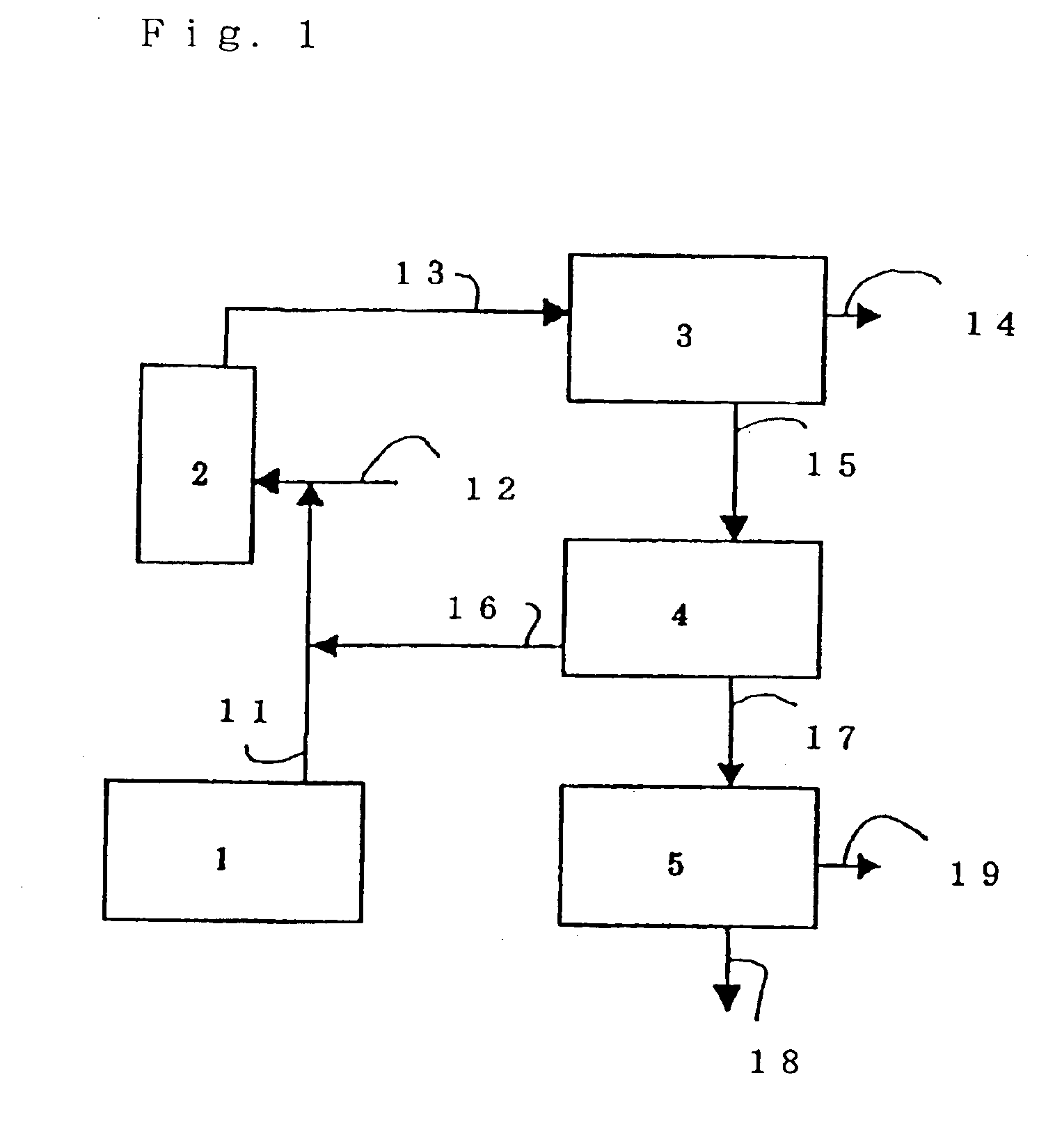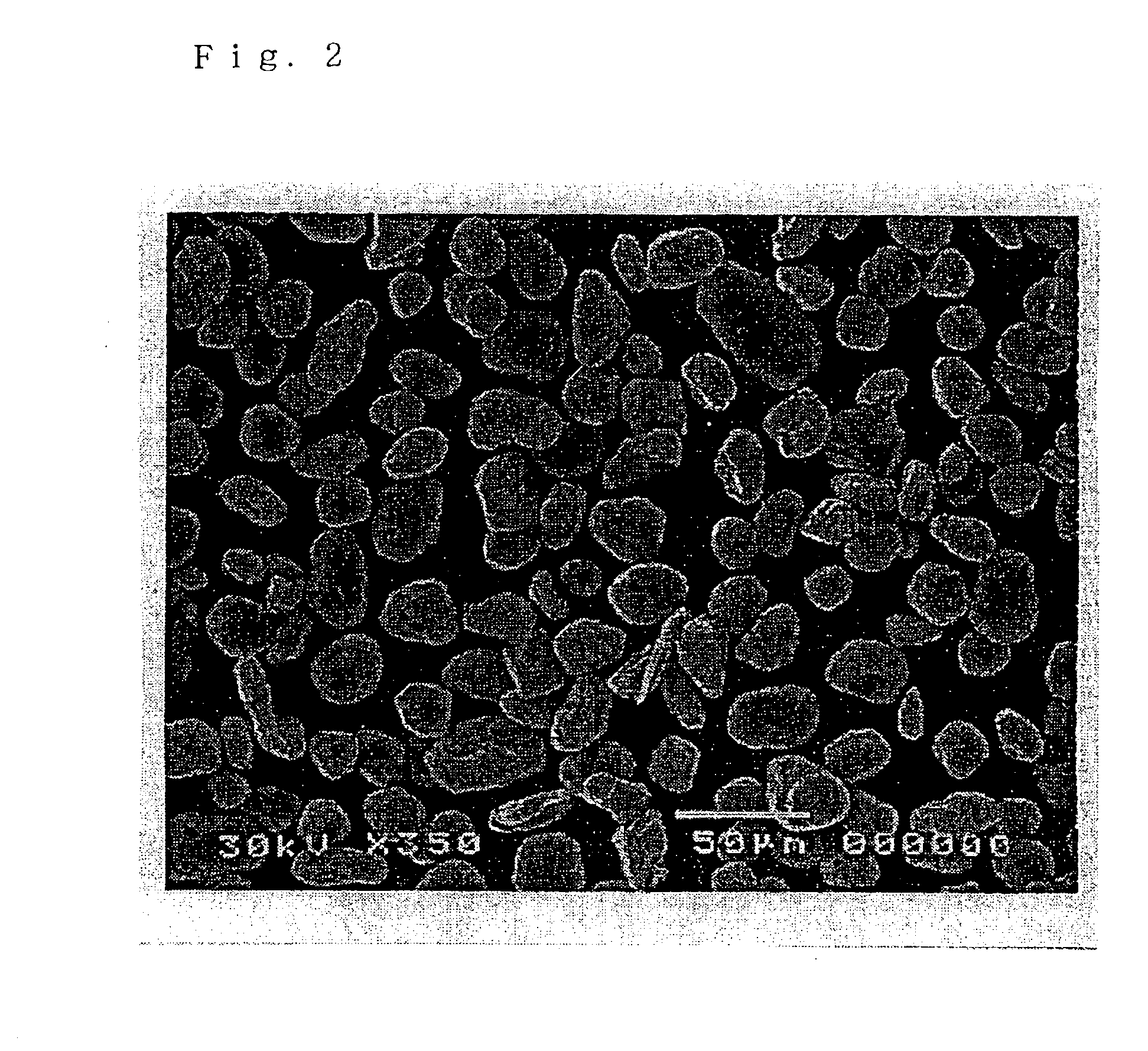Anode material for lithium secondary battery, process for production thereof, and lithium secondary battery
a lithium secondary battery and anode material technology, applied in the field of anode materials, can solve the problems of scaly graphite particles obtained by grinding, and achieve the effects of preventing the decomposition of solvents, high electrode density, and high energy density
- Summary
- Abstract
- Description
- Claims
- Application Information
AI Technical Summary
Benefits of technology
Problems solved by technology
Method used
Image
Examples
examples
[0156]Measurement of properties was made as follows.
[0157]A given amount of a sample (graphite particles or anode material) was placed in a polyvinyl chloride-made pipe having a sectional area of 2 cm2, closed with a copper-made cover at one end. A copper-made cylinder was inserted into the pipe from the other end of the pipe, and the sample in the pipe was pressed at a given pressure. In this state, the sample was measured for thickness (t) using a slide calipers. Further, the electric resistance (R) between the copper-made cover and the copper-made cylinder was measured using an electric resistance tester, AX-115A produced by Adex Co. Specific resistance (SR) was calculated using the following formula.
SR=2R / t(Ω.cm)
[Lattice Constant Co (002)]
[0158]An X-ray diffractometer, X'Pert-MPD produced by philips Co. was used. A Cu—Kα line was monochromatized with Ni using a monochrometer; a high-purity silicon was used as a standard substance; and measurement was made ac...
examples 1 to 3
(Production of Graphite Particles)
[0169]Graphite particles produced in China, having an average particle diameter of 3.3 mm in the AB plane direction and a lattice constant Co (002) of 0.6707 nm were used as a raw material graphite, and the graphite particles were subjected to fine grinding and converted into spherical graphite particles, using an impact grinder (first step)
[0170]A pin mill produced by Leche Co. was used as the grinder. The pins fitted to the rotor were arranged so that the outermost pins were on a circle of 9.5 cm in diameter. The rpm of the rotor was set at 20,000. At this time, the linear speed of the outermost pins was about 100 m / sec.
[0171]The raw material graphite was fed at a rate of 200 g / min by allowing the graphite to be carried by the suction wind generated by the grinder. The ground graphite particles were collected by a cyclone and a bag filter. The collected graphite particles were again fed into the grinder at a rate of 200 g / min by allowing them to b...
PUM
 Login to View More
Login to View More Abstract
Description
Claims
Application Information
 Login to View More
Login to View More - R&D
- Intellectual Property
- Life Sciences
- Materials
- Tech Scout
- Unparalleled Data Quality
- Higher Quality Content
- 60% Fewer Hallucinations
Browse by: Latest US Patents, China's latest patents, Technical Efficacy Thesaurus, Application Domain, Technology Topic, Popular Technical Reports.
© 2025 PatSnap. All rights reserved.Legal|Privacy policy|Modern Slavery Act Transparency Statement|Sitemap|About US| Contact US: help@patsnap.com



